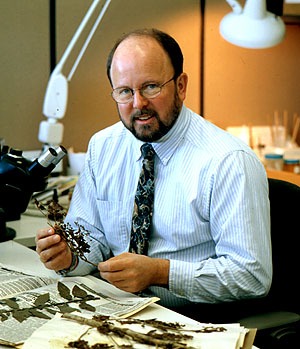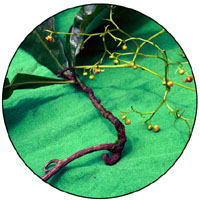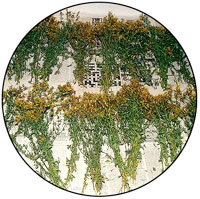 |
QUICK SEARCH
MO PROJECTS:
Africa
Asia/Pacific
Mesoamerica
North America
South America
General Taxonomy
Photo Essays
Training in Latin
America
MO RESEARCH:
Wm. L. Brown Center
Bryology
GIS
Graduate Studies
Research Experiences
for Undergraduates
Imaging Lab
Library
MBG Press
Publications
Climate Change
Catalog Fossil Plants
MO DATABASES:
W³MOST
Image Index
Rare Books
Angiosperm
Phylogeny
Res Botanica
All Databases
INFORMATION:
What's New?
People at MO
Visitor's Guide
Herbarium
Jobs & Fellowships
Symposium
Research Links
Site Map
Search
 |
table of contents |
PROFILE: James S. Miller |
|||||||
 |
Curator Jim Miller is head of the Department of Applied Research and coordinates the Garden's programs in economic botany. His research interests include systematics of tropical Boraginaceae, and he continues to describe new species from both the old and new world tropics.
Photo: Trent Foltz |
||||||
Raw Material for Future Discoveries"Plants have always been the primary source for medicinal compounds. Nature is the world's best chemist," says Miller, who directs the Garden's natural products research program. As the provider of raw materials for further evaluation, the Garden plays an important part in an urgent mission. "The genes that exist in the natural world are all the raw material we have for developing new food crops," said Miller, "but the species that could supply those genes are going extinct at an unprecedented rate." Natural products research holds a great deal of promise, but it moves at a careful page. From the time a plant is collected and tested to the release of a commercial drug, 10 to 15 years can elapse. "Bioprospecting supports botanical research and conservation of endangered species," Miller continued. "At the same time, it has great potential to benefit human health." | |||||||
| |||||||
| Text and photos from "The Unseen Garden" available from MBG Press. | |||||||
© 1995-2025 Missouri Botanical Garden, All Rights Reserved
4344 Shaw Blvd.
St. Louis, MO 63110
(314) 577-5100
Technical Support

